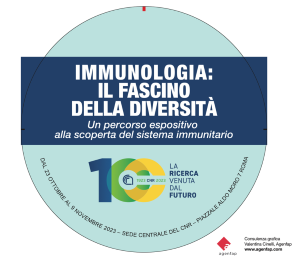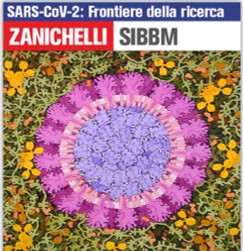|
The Institute of Molecular Biology and Pathology (IBPM) develops research in fundamental biology, with biotechnological applications in biomedicine, the environment and agrifood using interdisciplinary and multidisciplinary approaches. |
| SHARING THE FUTURE - STUDENTS AND SCIENCE Teresa Colombo go to video |
 |
|
‘Immunology: the charme of diversity’ 23 october - 9 november 2023 CNR headquarters, Roma |
 |
The COVID-19 I-book

A project co-edited by Barbara Illi and Valeria Poli
go to: Barbara Illi’s interview


